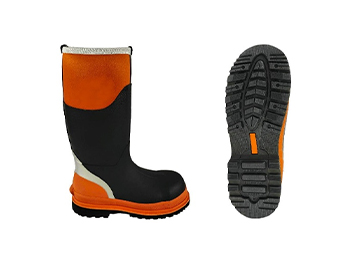Do Rain Boots Work in Snow?
When winter arrives, many people find themselves facing the dilemma of selecting the right footwear for the snowy conditions. Often, rain boots come to mind as a convenient option, especially since they are waterproof and easy to slip on. However, the question remains do rain boots work in snow?
Rain boots, typically made from rubber or other waterproof materials, are designed primarily to keep your feet dry in wet conditions like rain puddles or muddy terrains. Their main purpose is to prevent water from getting in, making them an attractive option for anyone who wants to stay dry. But when it comes to snowy situations, there are several factors to consider before making a decision.
Insulation and Warmth
One significant aspect to consider is insulation. Most rain boots are not insulated, which means they do not provide adequate warmth during cold winter months. Snow is often accompanied by frigid temperatures, and if your feet start to get cold, it can make for an unpleasant experience. Therefore, if you plan to wear rain boots in snow, be prepared to wear thermal socks or face the risk of your feet becoming uncomfortably cold.
Comparatively, winter boots are specifically designed for snowy conditions. They provide insulation to keep your feet warm and are typically lined with materials like fleece or wool. If you anticipate spending a lot of time in the snow, investing in a good pair of winter boots might be more beneficial.
Traction and Slip Resistance
Another critical feature to evaluate is the traction on the soles of the boots. Most rain boots have smooth soles, which may not provide adequate grip on icy or snowy surfaces. The risk of slipping becomes significantly higher if the soles lack traction, leading to potential falls and injuries.
Winter boots, on the other hand, are crafted with specially designed outsoles that provide optimal traction in snowy and icy conditions. These outsoles often feature deep lugs and rubber compounds that grip the surface effectively, reducing the risk of slipping.
rain boots work in snow

Comfort and Mobility
Comfort is another essential consideration. Rain boots may not be designed for long walks or extended wear; the lack of arch support can lead to discomfort, especially if you're trudging through deep snow. The stiff materials used in many rain boots can also limit movement, making it challenging to navigate through snow-covered landscapes.
In contrast, winter boots typically offer better cushioning, support, and flexibility. They are designed for mobility, allowing you to walk comfortably through snowdrifts and slippery sidewalks without the worry of your feet becoming sore or fatigued.
Waterproofing Capabilities
While rain boots are waterproof, it's important to consider how they perform in snowy conditions. Snow can melt when it comes into contact with warm surfaces, leading to slush, which can find its way into any less-than-tight footwear. If you step into deep snow or slush with rain boots, there's a risk that melting snow could seep in around the top of the boot, leaving your feet wet and cold.
Winter boots are engineered to withstand not only snow but also the inevitable melting that occurs, with many models featuring higher shafts and additional waterproof membranes. This design ensures that your feet remain dry even when walking through slushy conditions.
Conclusion
In conclusion, while rain boots can offer some level of protection in light, powdery snow, they are not the best option for serious winter conditions. Lack of insulation, poor traction, limited comfort, and potential leakage make them less suitable for heavy snowfall or icy terrains. If you frequently find yourself in snowy environments, investing in a quality pair of winter boots is undeniably the smarter choice. They provide the warmth, grip, and comfort necessary to tackle winter's challenges, ensuring that you stay safe and comfortable throughout the season.
Ultimately, the choice between rain boots and winter boots comes down to the specifics of your climate and your plans—consider these factors to make an informed decision that will keep your feet warm, dry, and happy all winter long.
-
Stay Dry in Any Condition with WadersNewsJul.17,2025
-
Elite Performance with Camouflage Combat BootsNewsJul.17,2025
-
Dry and Comfortable with Green Rubber Garden ShoesNewsJul.17,2025
-
Convenient Protection with Foldable RainbootsNewsJul.17,2025
-
Comfort and Protection with Neoprene Work BootsNewsJul.17,2025
-
Brighten Rainy Days with Floral Rain BootsNewsJul.17,2025
-
Safety Wellies: The Ultimate Combination of Protection, Comfort, and VisibilityNewsJun.19,2025











